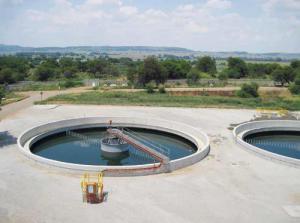
A University of Florida (UF) researcher has figured out how to reduce the time it takes to clean mine wastewater
Now, a University of Florida (UF) researcher has figured out how to trim that time dramatically — to just two to three hours, a potential boon to mining companies, the environment and global regions where water is scarce.
“I think the ability to save water is going to be really big, especially when you’re talking about China and other parts of the world,” explains Mark Orazem a distinguished professor of chemical engineering in UF’s Herbert Wertheim College of Engineering.
His team’s idea has attracted the attention of the Minnesota-based Mosaic Company, which produces phosphate and potash for fertiliser and operates four phosphate mines in Central Florida.
Overcoming a timely process
Mining operations use water for mineral processing, dust suppression and slurry transport. When they’re finished with it, the water holds particles of mineral byproducts, known in the phosphate mining business as clay effluent.
In the case of phosphate mines that are so common in Florida, the clay effluent has the consistency of milk.
“It looks like a solid, but if you throw a stone into it, it’ll splash,” says Paul Kucera, senior engineer advisor in research and development with Mosaic.
That water is pumped into enormous settling ponds — some are as large as a mile square with a depth of about 40 feet — where the particles can sink to the bottom.
But it’s a lengthy process because the particles are electrically charged. Like charges repel and opposite charges attract.
The particles’ like charge causes them to repel each other, which keeps them suspended in the water instead of sticking together and sinking to the bottom.
How Orazem’s design works
Orazem’s design allows a continuous feed of clay effluent into a separation system. There, upper and lower plates are used as electrodes.
An electrical potential difference is applied across the electrodes, creating an electric field, which causes the charged particles to move toward the bottom, where they form a wet solid called a cake. In the cake dewatering zone, the particles can’t move, so the water is forced to the top.
The cake can then be used to fill the holes created by the mining operation, while the water is now clear enough to be reused to process mined phosphate ore.
“Instead of having the water tied up in these clay settling areas, water is sent back through the process and then reused and reused and reused,” Orazem said.
Orazem’s team has created a lab-sized prototype. The next step, he said, is to determine how to scale it up to a point where it can work in a real-world mine.
While Orazem’s concept was designed for Florida phosphate mines, he said it could be used anywhere.
–
Sciencedaily.com









